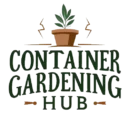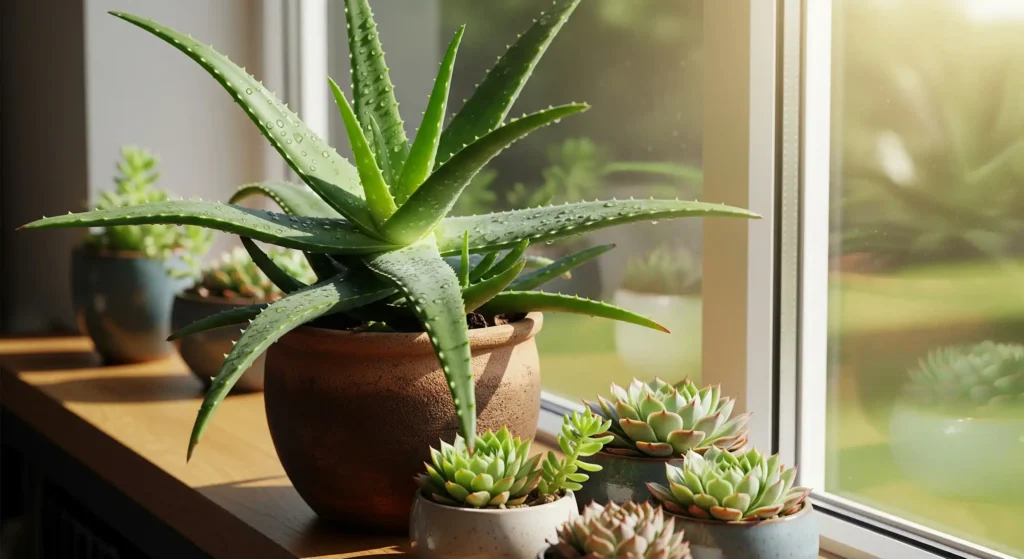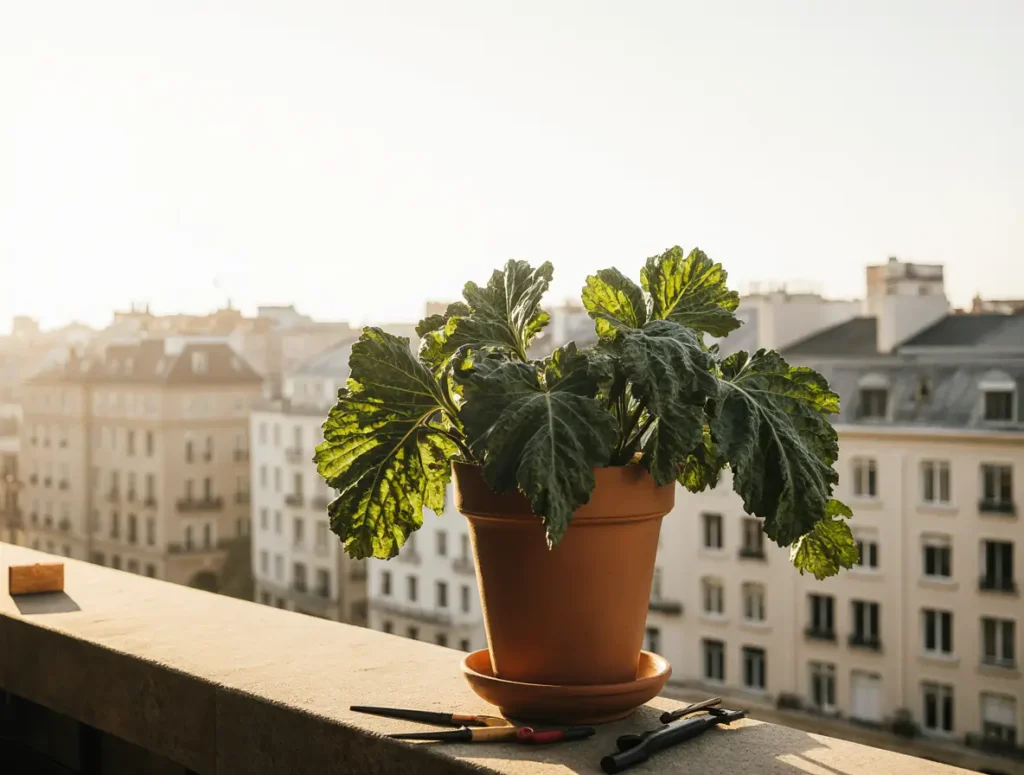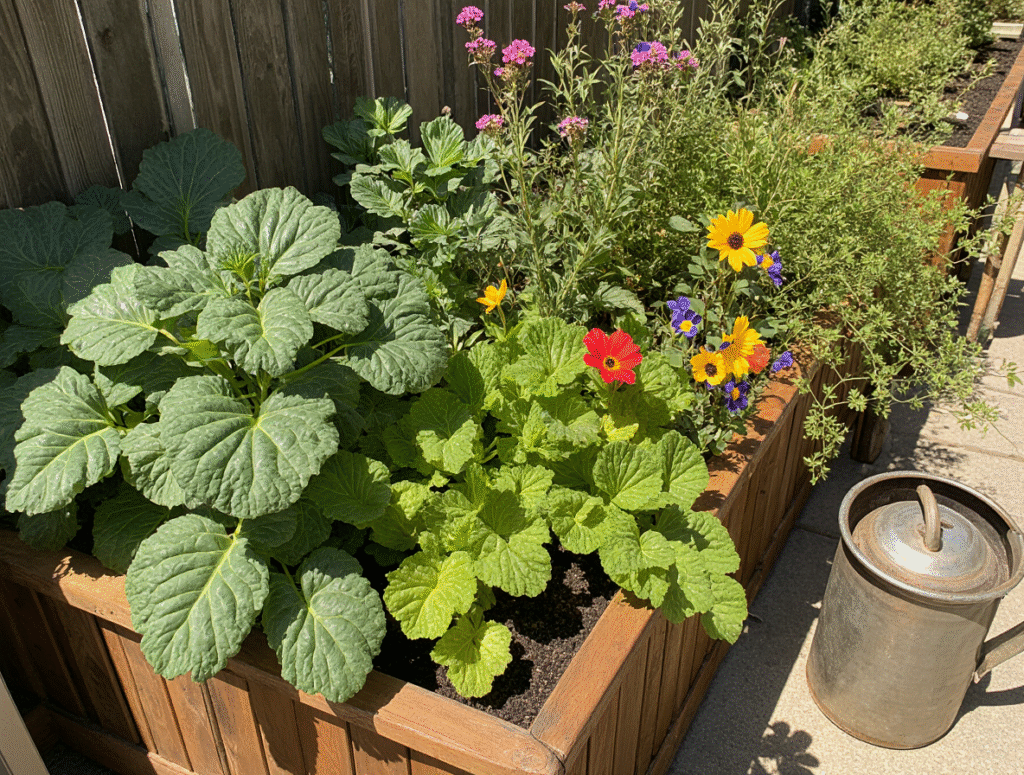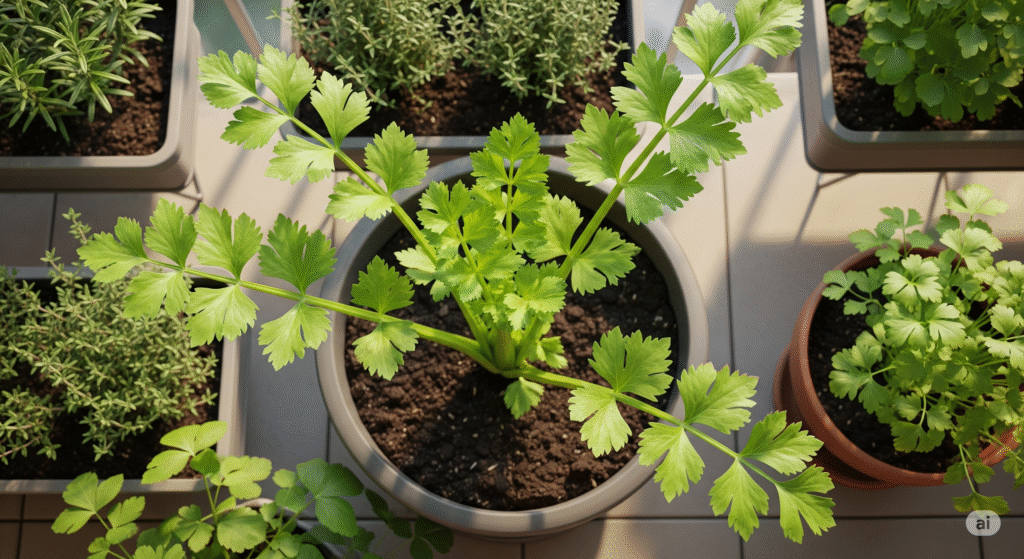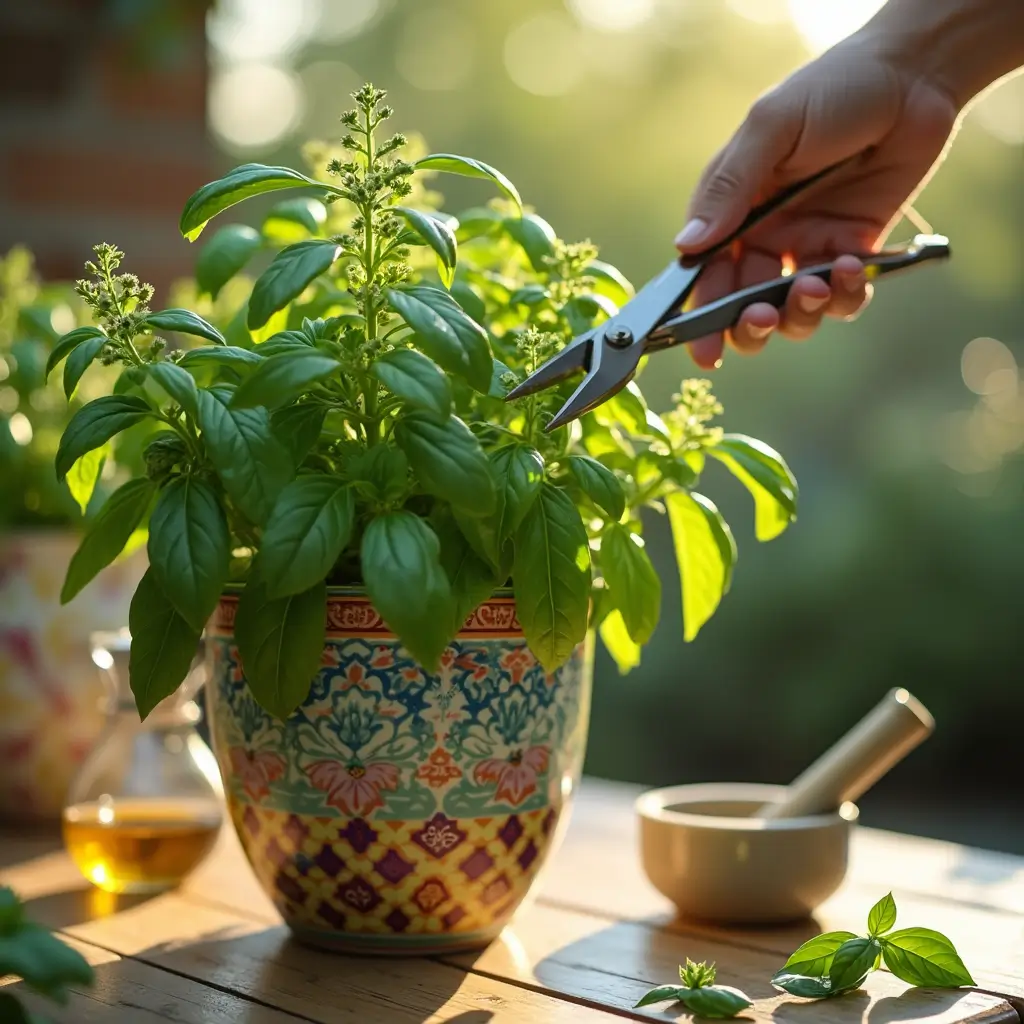
How to Trim Basil: A Complete Guide to Growing Big, Bushy Basil Plants
Basil is one of the most beloved herbs in the culinary world, known for its aromatic leaves and versatility in dishes ranging from pesto to salads. However, growing basil that’s big, bushy, and productive requires more than just planting and watering. One of the most important practices for cultivating healthy basil is trimming. If you’ve ever wondered how to trim basil to maximize its growth and yield, you’re in the right place. This comprehensive guide will walk you through everything you need to know about how to trim basil, from the benefits of regular pruning to the step-by-step process, and even how to preserve your harvest. Whether you’re a seasoned gardener or a beginner, mastering how to trim basil will transform your herb garden and ensure a bountiful supply of fresh basil all season long.
Why Trimming Basil is Essential
Trimming basil isn’t just about harvesting leaves for your kitchen—it’s a vital practice that directly impacts the health and productivity of your plants. Here’s why you should make trimming a regular part of your basil care routine:
- Encourages Bushier Growth
When you trim basil, you’re essentially telling the plant to grow more stems and leaves. By cutting back the main stem, you stimulate the growth of side shoots, which results in a fuller, bushier plant. This not only looks more attractive but also increases your overall yield.
- Prevents Early Flowering
Basil plants that are allowed to flower will slow down their leaf production. Trimming helps remove flower buds before they bloom, redirecting the plant’s energy back into leaf growth. This ensures you have a steady supply of fresh basil leaves for cooking.
- Promotes Healthier Plants
Regular trimming prevents your basil from becoming leggy and overcrowded. It improves air circulation around the plant, reducing the risk of diseases like powdery mildew. Plus, it allows sunlight to reach all parts of the plant, promoting even growth.
When to Start Trimming Basil
Timing is everything when it comes to trimming basil. Start too early, and you might stunt the plant’s growth. Start too late, and you could miss the opportunity to shape it into a bushy, productive herb. Here’s when and how to begin:
For Seedlings
Begin trimming your basil when the seedlings are about 6-8 inches tall and have developed 3-4 sets of leaves. At this stage, the plant is usually a single stem. Pinch the main stem back to just above a set of side shoots, removing about one-third of the plant. This simple step will double your basil harvest by turning a single stem into two.
For Store-Bought Transplants
If you’ve purchased basil plants from a garden center, they might already be larger than 6-8 inches. Don’t worry—you can still trim them back to encourage bushier growth. Separate the plants if they’re grouped together, then trim each one by about one-third, cutting just above a set of side shoots.
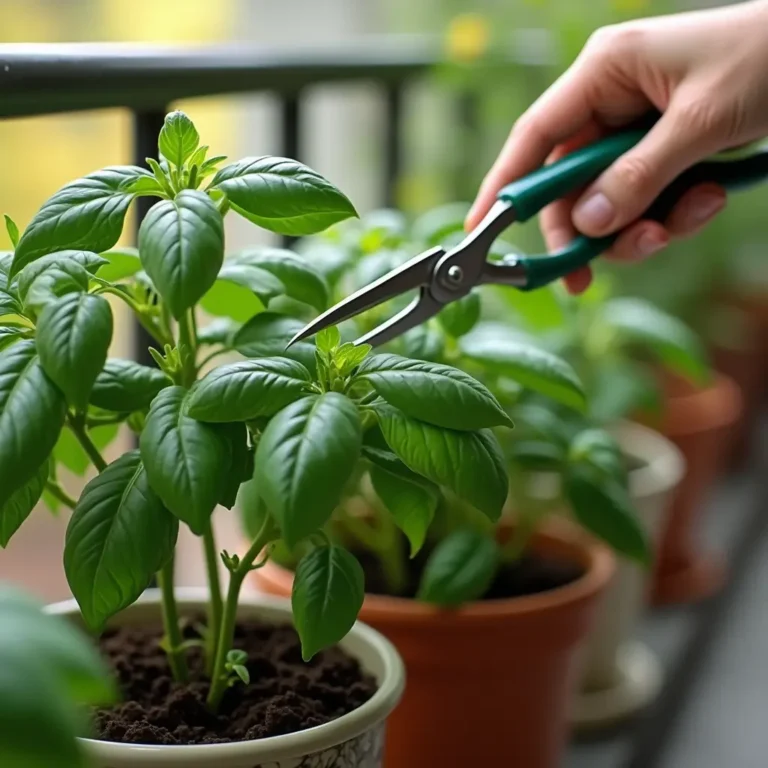
How to Trim Basil: Step-by-Step Instructions
Trimming basil is a straightforward process, but it’s important to do it correctly to avoid damaging the plant. Follow these steps to ensure your basil thrives:
- Gather Your Tools
You’ll need a pair of clean, sharp herb snips or scissors. Using dull tools can tear the stems, making the plant more susceptible to disease.
- Identify the Cutting Point
Look for a set of healthy leaves with tiny leaf buds emerging from the leaf axils (the point where the leaf meets the stem). These buds will grow into new stems once you trim the plant.
- Make the Cut
Using your snips, cut the main stem about a quarter inch above the leaf buds. Be sure to remove the top section of the stem rather than just plucking individual leaves. This encourages the plant to grow more stems and leaves.
- Repeat Regularly
After the initial trim, continue to prune your basil every 2-3 weeks throughout the growing season. This will keep the plant bushy and productive.
The Wrong Way to Trim Basil
While trimming is essential, there’s a right and wrong way to do it. One common mistake is plucking individual leaves instead of cutting entire stems. This approach doesn’t stimulate new growth and can leave your plant looking sparse and leggy. Always trim stems back to a set of leaf buds to encourage bushier growth.
How to Pinch Off Basil Flowers
Flowering is a natural part of a basil plant’s life cycle, but it’s not ideal if you’re growing basil for its leaves. Here’s how to handle flowering:
Identify Flower Buds
Flower buds typically form at the tips of the stems. They look like small clusters of tiny leaves and will eventually open into white or purple flowers.
Pinch or Snip Them Off
As soon as you notice flower buds forming, pinch them off with your fingers or snip them with herb scissors. This redirects the plant’s energy back into leaf production.
Use the Flowers
Don’t toss those flower buds! They’re edible and have a mild basil flavor. Add them to salads, pasta, or even pesto for a unique twist.
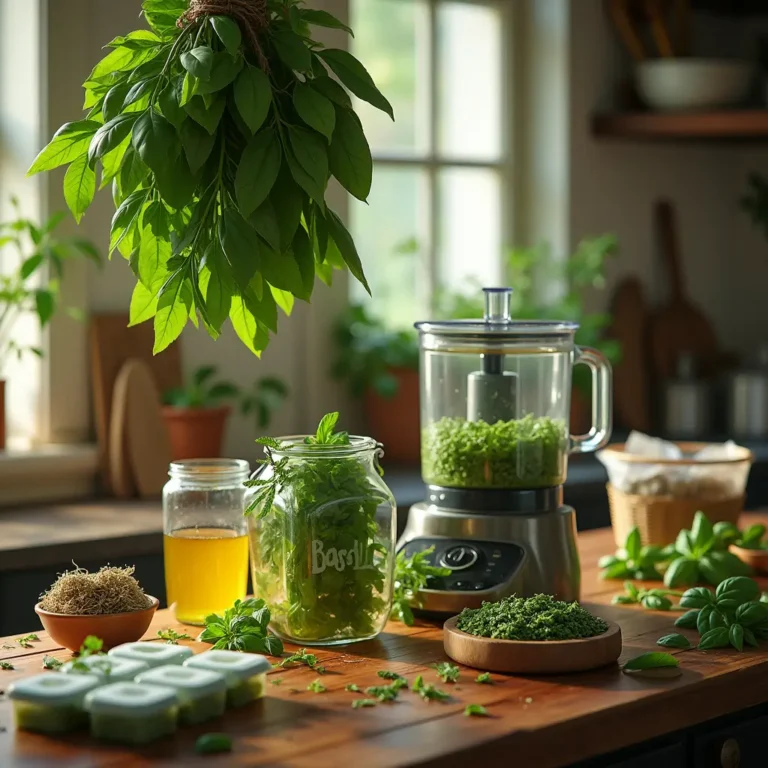
Preserving Your Basil Harvest
Once you’ve trimmed your basil, you’ll want to make the most of your harvest. Here are two popular methods for preserving basil:
Drying Basil
- Gather stems into small bundles and tie them with twine.
- Hang the bundles in a warm, dry place away from direct sunlight.
- Once the leaves are completely dry, crumble them into an airtight container.
While drying is easy, keep in mind that it can diminish some of the herb’s flavor.
Freezing Basil
- Remove the leaves from the stems and place them in a food processor.
- Add a drizzle of olive oil and pulse until the leaves are coarsely chopped.
- Transfer the mixture into freezer bags or ice cube trays for easy portioning.
Freezing preserves the fresh flavor of basil better than drying, making it ideal for winter use.
Tips for Growing Healthy Basil
To get the most out of your basil plants, follow these additional tips:
- Choose the Right Variety: Some basil varieties, like Everleaf and Emerald Towers, are slower to flower, giving you a longer harvest window.
- Provide Plenty of Sunlight: Basil thrives in full sun, so aim for at least 6-8 hours of direct sunlight daily.
- Water Consistently: Keep the soil moist but not waterlogged. Basil prefers well-drained soil.
- Fertilize Sparingly: Too much fertilizer can lead to excessive leaf growth with less flavor. Use a balanced fertilizer sparingly.
How to Grow Basil Indoors: A Complete Guide to Cultivating Fresh Basil Year-Round
If you’re interested in growing basil indoors, check out our detailed guide : How to Grow Basil Indoors: A Complete Guide to Cultivating Fresh Basil Year-Round. This guide covers everything you need to know about selecting the right varieties, setting up your indoor growing space, and maintaining healthy basil plants throughout the year. Whether you’re a seasoned gardener or a beginner, this resource will help you enjoy fresh basil no matter the season.
Conclusion
Learning how to trim basil is a game-changer for any herb gardener. Not only does it promote bushier, healthier plants, but it also ensures a steady supply of fresh basil for your kitchen. By following the steps outlined in this guide, you’ll be able to grow basil that’s not only productive but also a beautiful addition to your garden.
So, grab your herb snips and start trimming—your basil plants (and your taste buds) will thank you!
By incorporating these tips and techniques, you’ll master the art of trimming basil and enjoy a bountiful harvest all season long. Whether you’re a seasoned gardener or a beginner, this guide will help you grow basil like a pro. Happy gardening!
Additional Tips for Maximizing Basil Growth
- Companion Planting: Basil grows well alongside tomatoes, peppers, and oregano. These plants can help deter pests and improve growth.
- Mulching: Apply a layer of mulch around your basil plants to retain soil moisture and regulate temperature.
- Regular Harvesting: The more you harvest, the more your basil will grow. Don’t be afraid to trim frequently!
Frequently Asked Questions
Q: Can I trim basil in the winter?
A: Basil is a warm-weather herb and doesn’t thrive in cold temperatures. If you’re growing basil indoors, you can trim it year-round, but outdoor plants should be harvested before the first frost.
Q: How do I know if I’m over-trimming my basil?
A: Over-trimming can stress the plant. Always leave at least two sets of leaves on each stem to ensure the plant can continue photosynthesis.
Q: Can I grow basil from cuttings?
A: Yes! Basil is easy to propagate from cuttings. Simply place a trimmed stem in water until roots form, then transplant it into soil.
Final Thoughts
Trimming basil is a simple yet powerful technique that can transform your herb garden. By understanding when and how to trim basil, you’ll enjoy healthier plants, bigger harvests, and a continuous supply of fresh basil for your favorite recipes. So, don’t hesitate—start trimming today and watch your basil thrive!
You Might Like
